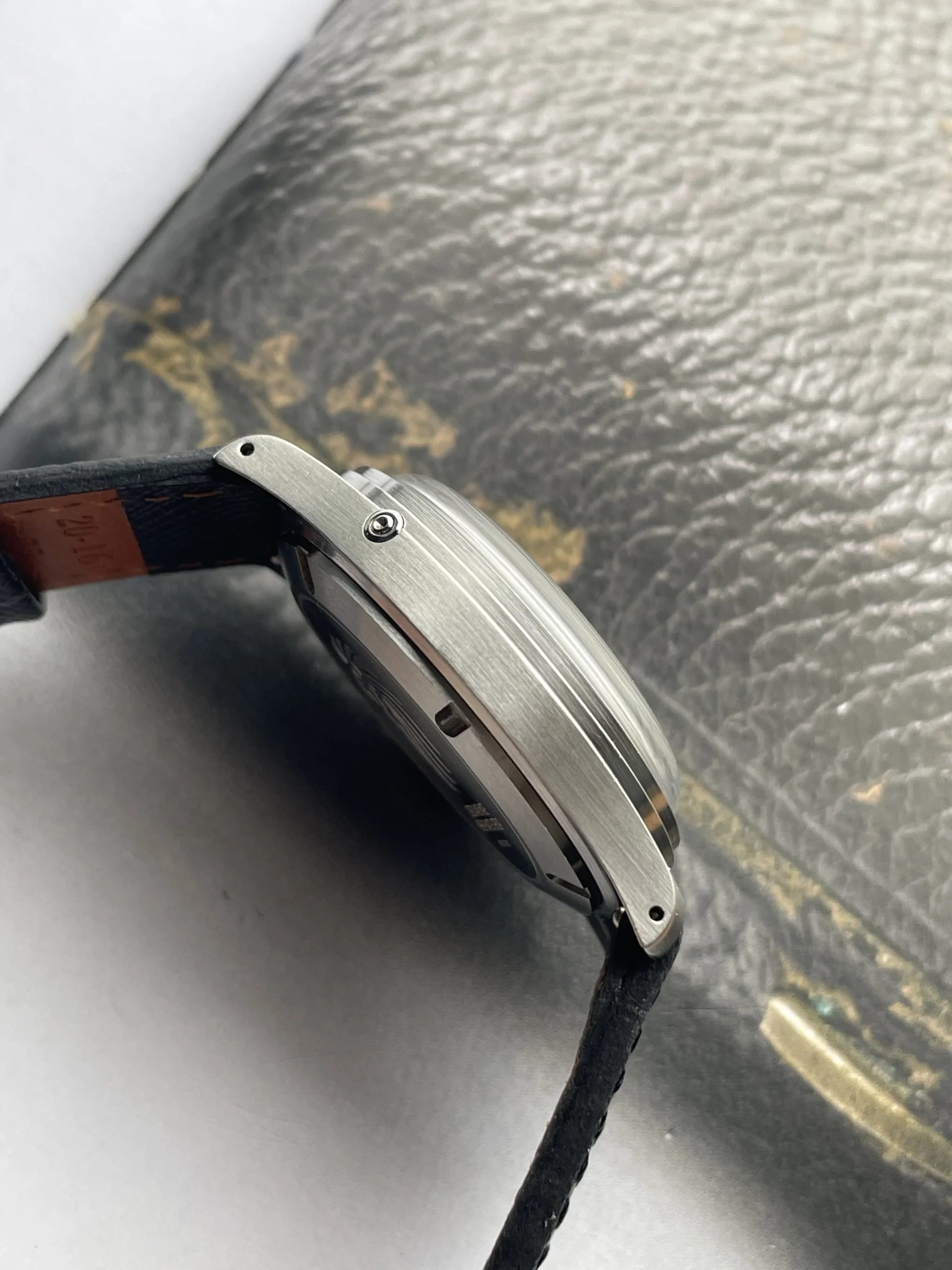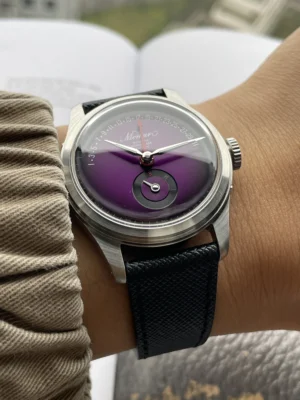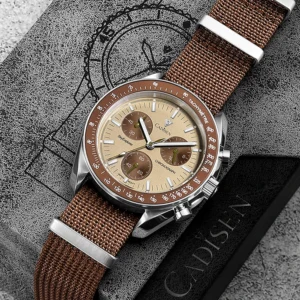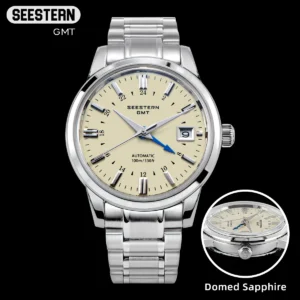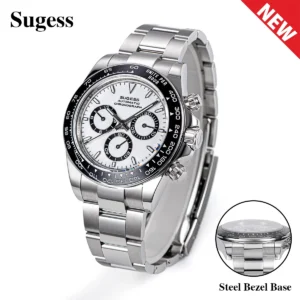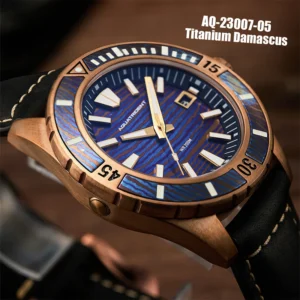Introduction to Moonphase Complications
A moonphase complication is a fascinating horological feature that displays the current phase of the moon as it appears in the night sky. This elegant mechanism tracks the lunar cycle directly on your watch dial, showing whether you’re experiencing a full moon, new moon, or something in between.
Throughout history, humans have been captivated by the moon’s changing appearance. From ancient civilizations planning harvests to sailors navigating by its light, tracking lunar cycles has practical roots that extend deep into our past. Today, this connection to celestial rhythms continues through the art of watchmaking.
The appeal of moonphase complications extends beyond mere functionality. While they once served practical purposes for fishing, hunting, and understanding tides, today they represent something more profound—a connection to timekeeping traditions that predate modern civilization. The ancient history of dive watch engineering shares similar roots in practical timekeeping that evolved into artistic expression.
In early astronomical devices like the Antikythera mechanism, we see evidence of humanity’s enduring fascination with tracking celestial bodies. Modern moonphase watches continue this tradition, combining practical timekeeping with artistic expression.
In this guide, we’ll explore the intricate mechanics behind moonphase complications, their varying levels of accuracy, different display types, and how they’ve evolved through centuries of watchmaking innovation. Whether you’re a seasoned collector or simply curious about how these miniature astronomical displays work, you’ll discover the perfect blend of science and art that makes moonphase complications so captivating.
The Fundamental Mechanics: How a Standard Moonphase Works
At its core, a standard moonphase complication relies on a surprisingly straightforward mechanical principle: representing the moon’s 29.5-day cycle through precise gearing and a rotating disc.
The standard moonphase mechanism consists of several key components:
- Moon Disc: A circular plate featuring two identical moon faces, typically painted or applied with luminous material
- 59-Tooth Driving Wheel: The gear that advances the moon disc
- Mechanical Finger: A small lever that pushes the driving wheel forward one tooth each day
- Display Aperture: The opening in the dial that reveals only the current phase of the moon
Every 24 hours, the watch’s timekeeping mechanism activates the mechanical finger, which pushes the 59-tooth wheel forward by exactly one tooth. This precise movement rotates the moon disc just enough to represent one day’s change in the moon’s appearance. The gearing ratio ensures that a complete revolution of the moon disc takes 29.5 days (59 teeth ÷ 2 = 29.5), matching the lunar cycle.
The moon disc contains two identical moon images because it must complete a full rotation every 59 days (showing each moon once). Through the dial’s aperture, you only see the portion of the disc representing the current phase—from new moon (fully dark) to full moon (completely visible) and back again.
This elegant mechanical solution shares design principles with other calendar mechanisms, similar to how day-date complications work with their own specialized gear systems. While relatively simple compared to some horological features, the standard moonphase offers remarkable functionality considering its compact size and integration with the overall watch movement.
Understanding Lunar Cycles and Standard Moonphase Accuracy
The actual lunar cycle—known as a synodic month—lasts 29.53059 days, not exactly 29.5 days as represented by the standard 59-tooth moonphase system. This small difference creates an inherent inaccuracy in traditional moonphase displays.
With each lunar month, a standard moonphase accumulates an error of approximately 0.03059 days (about 44 minutes). While seemingly minor, this discrepancy adds up over time:
- After 1 year: ~9 hours of error
- After 2 years: ~18 hours of error
- After 2 years and 7 months: Approximately 1 full day of error
This means a standard moonphase watch that’s perfectly set today will be off by one full day after just 2.7 years of continuous running. For a complication designed to track celestial movements, this level of drift presents an interesting paradox.
Watchmakers historically accepted this limitation as a reasonable compromise between accuracy and mechanical practicality. Creating a perfectly accurate moonphase would require extremely complex gearing, which would be difficult to fit inside a wristwatch and prohibitively expensive to manufacture. Many enthusiasts interested in the relationship between mechanical moonphase vs astronomical accuracy appreciate this balance between engineering constraints and precision.
For centuries, this approximation was entirely adequate for practical purposes. Most watch owners would regularly reset their timepieces anyway, and the lunar indication was valued more for its general reference and aesthetic appeal than for scientific precision. However, as we’ll see later, the quest for greater accuracy eventually led to the development of more sophisticated systems.
The Moon Disc and Visual Representation
The moon disc forms the visual heart of any moonphase complication. This thin, circular plate rotates beneath the dial, carrying artistic representations of the lunar surface that appear through the watch face aperture.
Traditional moon discs feature highly stylized depictions of the lunar face. Often rendered in gold against a deep blue background representing the night sky, these classic designs frequently incorporate stars or clouds for additional visual interest. The moon face typically includes simple eyes and mouth details, drawing on centuries-old astronomical illustrations.
As the disc rotates, different portions appear through the aperture, creating the visual effect of the moon waxing (growing larger) and waning (growing smaller). This movement corresponds directly to the actual lunar cycle visible in the night sky.
Modern watchmaking has expanded the artistic possibilities of moonphase displays in horology variations. Premium examples might feature:
- Hand-painted moon faces with exceptional detail
- Mother-of-pearl discs that capture the moon’s iridescent glow
- Aventurine glass backgrounds that sparkle like the night sky
- Photo-realistic moon representations based on astronomical images
- Three-dimensional moon spheres that actually rotate rather than using a flat disc
The craftsmanship involved in creating these discs represents a perfect marriage of technical precision and artistic expression. Even on high-volume production watches, the moon disc requires careful finishing and alignment to ensure proper operation and visual appeal throughout its rotation.
The Aperture: How Phases are Revealed to the Wearer
The aperture—the opening through which the moon disc is visible—plays a crucial role in creating the moonphase effect. Its design determines how the lunar cycle is presented to the wearer.
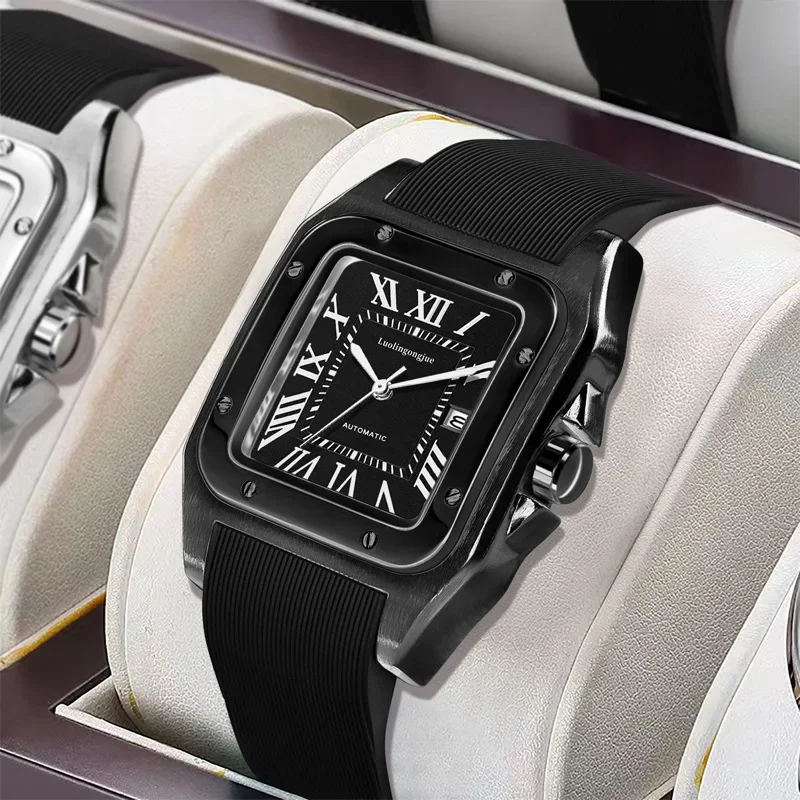
Most traditional moonphase displays feature a curved aperture, often referred to as a “bosom” or “arch” design. This curved opening creates the visual effect of the waxing and waning moon by progressively revealing or concealing portions of the moon disc below. The arched shape mimics the natural curve of the lunar crescent, enhancing the realistic appearance of the display.
The aperture is typically framed with decorative elements that integrate with the overall dial design. Common treatments include:
- Gold or polished metal surrounds
- Applied metal frames with beveled edges
- Painted or printed borders with star motifs
- Subtle color transitions that blend with the dial
The placement of the aperture significantly impacts the watch’s visual balance. Most commonly positioned at 6 o’clock, moonphase displays can also appear at 12 o’clock or integrated into subdials elsewhere on the face. The mechanical longevity of this system relates to the overall durability of mechanical watches, with many automatic watches lasting decades or longer with proper maintenance.
High-end watches often feature apertures with anti-reflective treatments to enhance visibility and reduce glare, allowing the moonphase display to remain legible in various lighting conditions. Some modern designs even incorporate magnification elements to emphasize the moonphase within the overall dial composition.
Advanced Moonphase Mechanisms: The Quest for Precision
The pursuit of greater astronomical accuracy has driven watchmakers to develop increasingly sophisticated moonphase systems that far surpass the standard 59-tooth mechanism.
The most common advanced system employs a 135-tooth gear wheel to achieve significantly higher precision. By more closely approximating the true lunar cycle of 29.53059 days, these mechanisms accumulate much less error over time. The mathematics are compelling:
With a 135-tooth wheel (controlling a disc with two moon images), each full rotation represents 67.5 days (135 ÷ 2). This creates a lunar month approximation of 29.53125 days—remarkably close to the actual 29.53059-day synodic month. The resulting error is just 0.00066 days per month, requiring approximately 122 years before accumulating a single day of discrepancy.
Some ultra-high-end watchmakers have pushed precision even further with custom systems achieving accuracy rates measured in centuries or millennia.
| Mechanism Type | Gear Configuration | Accuracy | Error Rate |
|---|---|---|---|
| Standard | 59-tooth wheel | 1 day error every 2.7 years | 0.03059 days/month |
| Advanced | 135-tooth wheel | 1 day error every 122 years | 0.00067 days/month |
| Ultra-Precise | Custom systems | 1 day error every 1,000+ years | <0.00008 days/month |
The extraordinary precision found in advanced moonphase complication accuracy represents the pinnacle of mechanical engineering within the constraints of a wristwatch. These systems require exceptionally fine manufacturing tolerances, with gear teeth measured in fractions of a millimeter.
What makes these high-precision systems particularly impressive is that they achieve their accuracy without relying on electronic components or corrections. They represent pure mechanical ingenuity—a testament to watchmaking’s blend of traditional craftsmanship and mathematical precision.
Classic “Bosom” Moonphase Displays
The classic “bosom” or traditional moonphase display is perhaps the most recognizable and beloved format. Named for its distinctive curved aperture resembling a human bosom, this design creates an elegant frame for the rotating moon disc beneath.
In this configuration, the curved window precisely controls how much of the moon disc is visible at any given time. As the disc rotates, the moon appears to grow and shrink naturally through its waxing and waning phases. The aperture edges effectively create the crescent shape during partial phases.
Traditionally positioned at 6 o’clock on the dial, this display style creates a pleasing visual symmetry. The surrounding elements often incorporate decorative flourishes like stars, clouds, or celestial motifs that enhance the astronomical theme. Premium moonphase automatic watches typically feature finely detailed apertures with polished edges and carefully aligned discs.
What makes this display style so enduring is its intuitive readability combined with artistic potential. The curved window naturally mimics how we see the moon in the night sky, creating an immediate visual connection between the mechanical representation and the celestial reality it depicts.
High-end examples often feature hand-finished details around the aperture and meticulously painted moon discs. The contrast between the deep blue or black background representing the night sky and the luminous moon face creates a striking visual focal point, even on otherwise restrained dial designs.
Radial and Hand-Type Moonphase Displays
While the traditional bosom display remains the most common, radial or hand-type moonphase indicators offer an alternative approach to tracking lunar cycles. Rather than using an aperture window, these displays employ a dedicated hand or pointer that moves around a circular scale.
In a radial moonphase, a pointer hand rotates around a subdial marked with the lunar cycle, typically divided into 29 or 31 sections. The scale often includes symbols for the key moon phases (new, first quarter, full, last quarter) or numerical indicators showing days since the new moon. This arrangement creates a more instrument-like reading of the lunar cycle rather than a pictorial representation.
The advantages of this system include:
– Greater precision in reading the exact day of the lunar month
– Cleaner integration with watches featuring multiple subdials
– Simplified mechanical implementation in some cases
– More technical aesthetic that complements scientific or instrument-style watches
Many high-precision perpetual calendar automatic watches incorporate radial moonphase indicators as part of their comprehensive astronomical displays. This style of moonphase presentation pairs naturally with calendar functions since both use similar pointer-and-scale reading methods.
While lacking the visual drama of seeing the moon “grow” through an aperture, radial displays offer their own elegance through precision and clarity. They appeal particularly to collectors who appreciate technical sophistication and readable functionality in their horological complications.
Innovative Moonphase Presentations in Modern Horology
Contemporary watchmaking has unleashed remarkable creativity in moonphase design, transforming this traditional complication into a canvas for horological artistry and technical innovation.
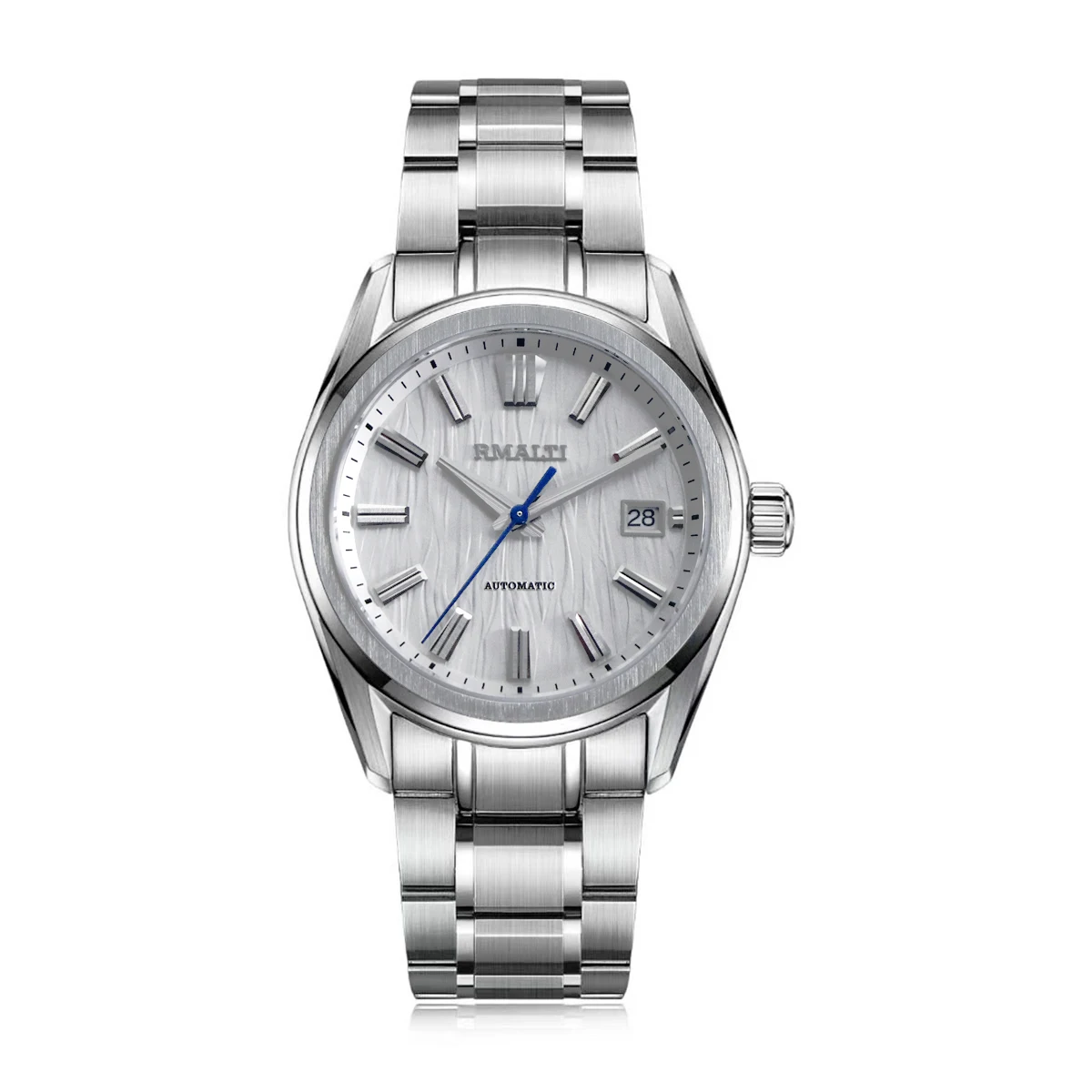
Among the most impressive advancements are three-dimensional moon spheres that physically rotate to display accurate phases. Unlike flat discs, these miniature spherical moons (often made of precious metals) turn on their axis to show the correct illuminated portion, creating a strikingly realistic representation of lunar phases.
Photorealistic moon displays represent another significant innovation. Using advanced printing techniques, these displays feature highly detailed lunar surfaces based on actual astronomical photography. Some even differentiate between the northern and southern hemispheric views of the moon, adding another layer of astronomical accuracy.
Other innovative approaches include:
- Meteorite dial moonphases, incorporating actual lunar meteorite material
- Rotating crystal spheres with embedded lunar imagery
- Planetarium-style complications that show multiple celestial bodies in addition to the moon
- Transparent sapphire moon discs that reveal movement parts beneath
- Color-changing moon displays that shift from silver to gold as phases progress
Many collectors appreciate these creative approaches to traditional complications found in unique automatic watches that push the boundaries of conventional design. These innovations demonstrate that even centuries-old complications can be reimagined through modern materials, manufacturing techniques, and creative vision.
Classic Automatic Dress Watches, Day Date Automatic Watches, Perpetual Calendar Automatic Watches
Price range: $540.60 through $574.60 Select options This product has multiple variants. The options may be chosen on the product pageAutomatic Chronograph Watches, Chronograph Pilot Watches
Price range: $233.36 through $237.58 Select options This product has multiple variants. The options may be chosen on the product pageClassic Automatic Dress Watches, GMT Automatic Watches, GMT Pilot Watches
Price range: $1,240.86 through $1,463.33 Select options This product has multiple variants. The options may be chosen on the product pageAutomatic Chronograph Watches, Classic Style Dive Watches
$3,053.06 Select options This product has multiple variants. The options may be chosen on the product pageAutomatic Skeleton Watches, Open Heart Automatic Watches
$98.36 Select options This product has multiple variants. The options may be chosen on the product pageBronze Automatic Watches, Military Inspired Automatic Watches, Professional Spec Dive Watches
Price range: $1,442.21 through $1,442.82 Select options This product has multiple variants. The options may be chosen on the product page
The most impressive examples combine technical innovation with artistic excellence, creating moonphase displays that function both as precision astronomical instruments and miniature works of art for the wrist.
Historical Journey of the Moonphase Complication
The tracking of lunar cycles in timekeeping devices has roots extending back thousands of years. Ancient civilizations from Mesopotamia to China developed early astronomical calculators to track celestial movements, including the phases of the moon.
One remarkable early example is the Antikythera mechanism, dating from approximately 100 BCE. This sophisticated Greek device could predict astronomical positions and eclipses, demonstrating that complex lunar tracking mechanisms have existed since antiquity.
During the Middle Ages, astronomical clocks in European town squares and cathedrals often featured moonphase indicators alongside other celestial displays. These public timepieces made astronomical information accessible to entire communities and represented significant engineering achievements of their era.
By the 18th century, pocket watches began incorporating moonphase complications, bringing celestial tracking to personal timekeeping. These early portable moonphase displays were primarily functional tools for those whose activities depended on lunar cycles, such as farmers and maritime navigators.
The transition to wristwatches in the early 20th century required significant miniaturization of moonphase mechanisms. During the 1940s and 1950s, moonphase wristwatches enjoyed a period of popularity, often combined with complete calendar functions.
The quartz crisis of the 1970s nearly eliminated traditional complications as electronic watches dominated the market. However, the mechanical renaissance that began in the 1980s brought renewed interest in astronomical complications, with the moonphase emerging as a symbol of traditional watchmaking’s enduring appeal.
Today’s moonphase watches represent the culmination of this long historical journey, with technical refinements that would have been impossible in earlier eras. The evolution of dive watch technology followed a similar path of continuous refinement while maintaining connections to historical origins.
Distinguishing True Moonphase from Day/Night Indicators
A common confusion in watch collecting involves distinguishing between true moonphase complications and simpler day/night indicators, which can look superficially similar but function quite differently.
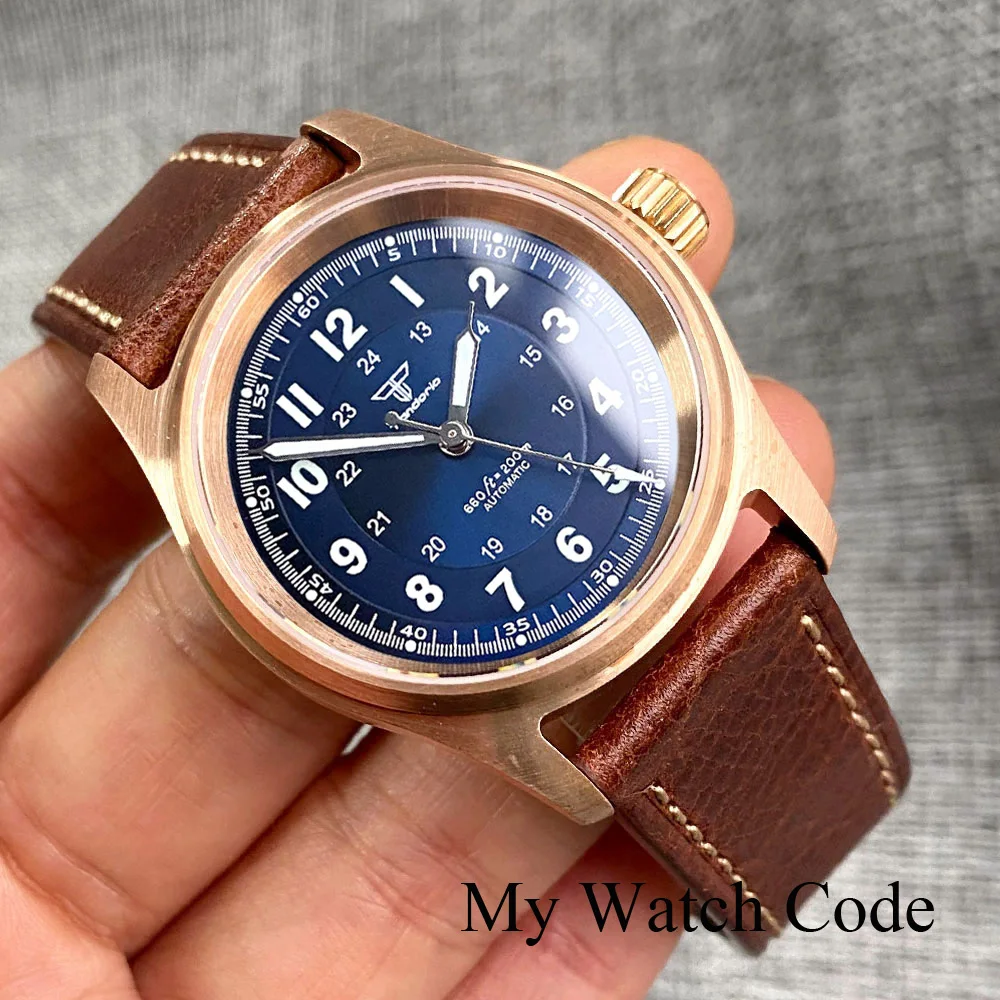
True moonphase complications:
* Track the actual 29.5-day lunar cycle
* Require specific gear ratios (typically 59 or 135 teeth)
* Show the moon’s changing appearance through its complete cycle
* Feature a disc with two moon images that makes one revolution every 59 days (standard system)
Day/night indicators:
* Simply rotate once every 24 hours
* Are directly connected to the hour wheel
* Show a sun during daytime hours and moon during nighttime hours
* Complete a full rotation daily rather than monthly
Visually, you can identify a true moonphase by observing it over several days—a genuine lunar display will show very subtle daily changes, while a day/night indicator will completely cycle between sun and moon every 24 hours.
In terms of mechanical complexity, moonphase complications require specialized gearing systems independent from the timekeeping train, while day/night indicators are relatively simple additions to the hour wheel. Many open heart automatic watches reveal similar mechanical distinctions through their transparent displays.
While both complications have their place in watchmaking, understanding this difference helps collectors properly appreciate the engineering involved in a true astronomical complication versus a simple day/night cycle indication.
Setting and Maintaining Your Moonphase Watch
Properly setting and maintaining a moonphase complication ensures accurate lunar tracking and extends the life of this delicate mechanism.
To set your moonphase watch correctly:
- First, determine the current moon phase using a reliable lunar calendar, weather app, or astronomical website.
- Consult your watch’s manual for the specific setting procedure, as mechanisms vary between models.
- Most moonphase watches are set via a recessed pusher or through the crown at a specific position.
- Advance the moonphase display until it matches the current lunar phase—full moon centered in the aperture for a full moon, completely hidden for a new moon, etc.
- For greater precision, set the watch during a clearly identifiable phase like full or new moon.
- Complete any other watch settings (time, date) after setting the moonphase.
For watches that have been stopped for an extended period, proper resetting is essential. Like other calendar functions, many moonphase mechanisms should not be adjusted during certain time periods (often between 9 PM and 3 AM) when the gears are actively engaging.
During regular service intervals (typically every 5-7 years), watchmakers will check the moonphase mechanism for proper alignment and function. Understanding how moonphase watches track lunar cycles provides insights into proper maintenance procedures.
With proper care and occasional adjustment (about once every 2-3 years for standard mechanisms), your moonphase watch will continue to accurately track the moon’s journey across the night sky.
Why Moonphase Complications Endure in Modern Watchmaking
In an age of digital precision where smartphone apps can provide real-time astronomical data, the continued popularity of mechanical moonphase watches might seem puzzling. Yet these complications remain among the most sought-after features in fine watchmaking.
This enduring appeal stems from something deeper than practical utility. Moonphase complications connect us to timekeeping’s origins—when the movements of celestial bodies were humanity’s original clocks. They represent a physical connection to natural cycles that governed human life for millennia before artificial light and digital calendars.
From a craftsmanship perspective, moonphase complications showcase the watchmaker’s art—the ability to translate vast astronomical cycles into tiny, precise mechanical systems. The visual poetry of seeing the moon “wax and wane” on your wrist represents the perfect marriage of science and art.
For many collectors, the moonphase also provides a contemplative element missing from purely functional timekeeping. Glancing at your watch and seeing the same moon phase that illuminates the night sky creates a moment of connection between personal time and universal rhythms.
Perhaps most significantly, moonphase complications embody the philosophical heart of mechanical watchmaking—creating beautiful objects that connect us to tradition, craftsmanship, and natural cycles in an increasingly digital world. The ultimate guide to moonphase watches explores this enduring appeal in greater detail.
Is a Moonphase Watch Worth the Investment?
When considering a moonphase watch purchase, several factors come into play beyond pure functionality.
From a technical perspective, a moonphase complication indicates a higher level of horological sophistication. Watchmakers must solve complex engineering challenges to fit these mechanisms into already crowded movements, requiring skilled craftsmanship and precision manufacturing. This complexity naturally affects pricing, with moonphase watches typically commanding higher prices than simpler timepieces.
For collectors, moonphase complications offer several advantages:
– Distinguished heritage connecting to astronomical timekeeping traditions
– Visual interest and artistic expression beyond basic time display
– Conversation-starting feature that showcases horological appreciation
– Additional craftsmanship touchpoints like hand-painted moon discs or finely finished apertures
From a maintenance standpoint, moonphase complications are generally robust when properly engineered, though they do add another element requiring occasional service and adjustment. Most can go several years between corrections, with high-precision versions potentially never needing adjustment within an owner’s lifetime.
While digital technology has eliminated the practical need for mechanical lunar tracking, the emotional and artistic value of a well-executed moonphase complication continues to make these watches desirable investments for those who appreciate mechanical artistry and horological tradition.
Can Moonphase Complications Be Found in Affordable Watches?
Moonphase complications were once found exclusively in high-end luxury watches, but today they appear across a broader range of price points, making this classic feature more accessible to watch enthusiasts.
In affordable moonphase watches (typically under $1,000), you’ll generally find the standard 59-tooth system with traditional bosom displays. These watches often use stamped rather than hand-finished components and may feature simpler moon disc designs. While lacking the refinement of luxury versions, they offer the same fundamental functionality and visual appeal.
Mid-range moonphase watches ($1,000-$5,000) typically feature improved materials, more detailed moon discs, and better overall finishing. Many watches in this category come from respected Swiss and German manufacturers with long histories of complication development.
At the luxury tier ($5,000+), moonphase complications are often paired with other sophisticated features like perpetual calendars. These high-end implementations frequently incorporate the more accurate 135-tooth systems, premium materials like solid gold moon discs, and exceptional hand-finishing throughout.
The quality differences between price tiers generally appear in:
– Accuracy of the mechanism (standard vs. advanced systems)
– Quality of finishing on visible components
– Materials used for the moon disc and surrounding elements
– Integration with other complications
– Overall movement quality and decoration
Many collectors begin their journey with more affordable options before potentially exploring premium offerings. The availability of quality moonphase watches at various price points has made this classic complication accessible to a wider audience of enthusiasts, similar to the range found in day-date automatic watches across different market segments.

